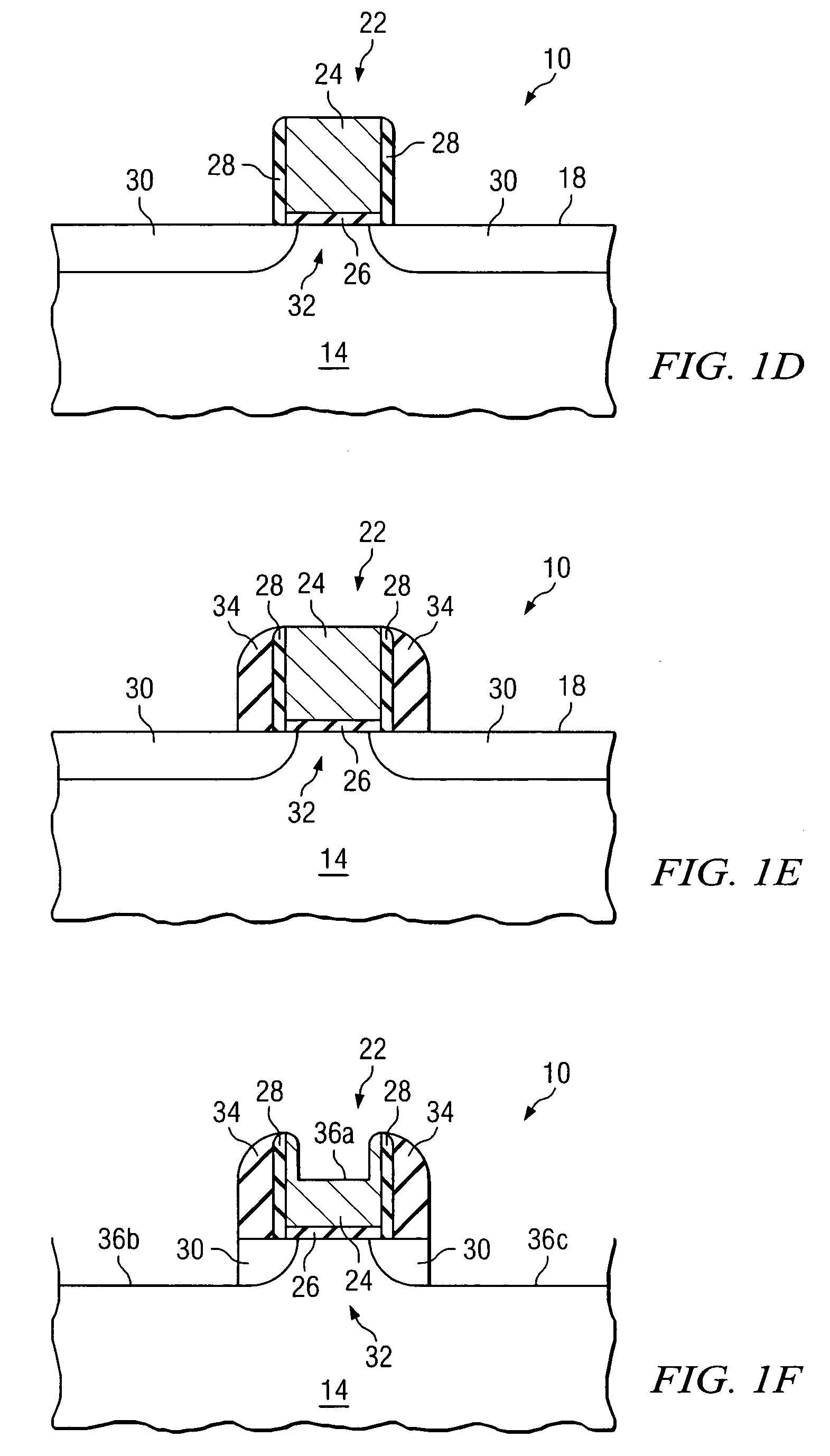System and method for improved dopant profiles in CMOS transistors
a technology of cmos transistor and dopant profile, which is applied in the field of system and method for improving the dopant profile of cmos transistor, can solve the problems of reducing the scale of semiconductor devices, reducing the reliability of the gate stack as a conductor, and reducing the difficulty of diffusion of dopants through the gate stack, etc., and achieves the effect of reducing disadvantages or greatly reducing problems
- Summary
- Abstract
- Description
- Claims
- Application Information
AI Technical Summary
Benefits of technology
Problems solved by technology
Method used
Image
Examples
Embodiment Construction
[0010]In order to form an integrated circuit device such as a field effect transistor, various conductive and nonconductive layers are typically deposited or grown on a semiconductor body or other outer semiconductor layer. FIGS. 1A–1H are cross-sectional views of a semiconductor structure 10 during the formation of multiple layers on an outer surface of a semiconductor body 14. Semiconductor structure 10 may be used as a basis for forming any of a variety of semiconductor devices, such as a bipolar junction transistor, an NMOS transistor, a PMOS transistor, a CMOS transistor, a diode, a capacitor, or other semiconductor based device. Particular examples and dimensions specified through out this document are intended for exemplary purposes only, and are not intended to limit the scope of the present disclosure. Moreover, the illustration in FIGS. 1A–1G are not intended to be to scale. As will be discussed in more detail below, conventional semiconductor fabrication techniques for fo...
PUM
 Login to View More
Login to View More Abstract
Description
Claims
Application Information
 Login to View More
Login to View More - R&D
- Intellectual Property
- Life Sciences
- Materials
- Tech Scout
- Unparalleled Data Quality
- Higher Quality Content
- 60% Fewer Hallucinations
Browse by: Latest US Patents, China's latest patents, Technical Efficacy Thesaurus, Application Domain, Technology Topic, Popular Technical Reports.
© 2025 PatSnap. All rights reserved.Legal|Privacy policy|Modern Slavery Act Transparency Statement|Sitemap|About US| Contact US: help@patsnap.com



